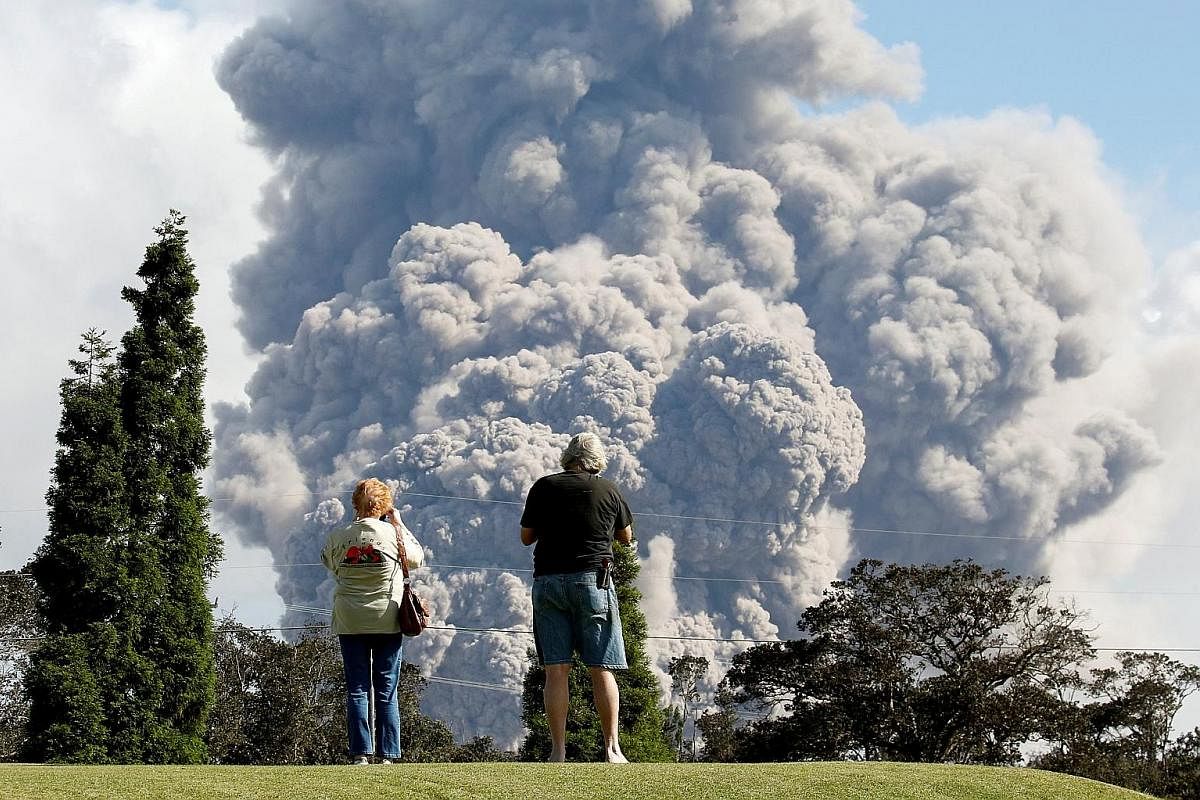Preparing for plumes: Volcano tourism on the rise
With volcano tourism on the rise, here are tips for staying safe while enjoying the spectacle

NEW YORK • Who is afraid of volcanoes? Certainly not those in a holiday mood, as statistics from travel websites and tour companies confirm an eruption of interest to visit or hike up volcanoes.
Volcano Adventures, a tour company founded by German volcanologist Tom Pfeiffer, said its day-trip excursions to Italy's Stromboli and Etna volcanoes have increased by 15.3 per cent since 2014.
The number of people climbing Mount Nyiragongo, an active volcano at Virunga National Park in Congo, exploded 92 per cent between 2015 and last year.
A United States National Park Service report estimates a 58 per cent hike in visitors at Hawaii Volcanoes National Park since 2008, when Kilauea, an active volcano, began erupting.
"Volcano tourism is set to rise with the establishment of more volcanic and geothermal geoparks and World Heritage sites," said guidebook author Patricia Erfurt-Cooper, referring to the areas designated by Unesco to protect the planet's geological heritage.
Still, the risk of being trapped, injured or killed while hiking a live volcano means one should undertake careful consideration and planning. Do your research: "Find out as much as possible about the volcano you plan to visit before leaving home," Rosaly Lopes, author of The Volcano Adventure Guide, said.
For example, which of the six eruption types does it exhibit?
Hawaiian and Strombolian eruptions emit gentle lava flow and moderate eruptions, respectively.
They represent the least dangerous types to watch.
"Be aware," warned Lopes. "No two volcanoes are alike, even if they are classified as the same type."
Take a look at maps that show roads or trails to the summit. See if escape routes have been provided and find out what kind of local emergency and search-and-rescue services are available. Pack protective attire: Determine equipment and clothing based on what type of material your volcano is likely to expel and your potential proximity to explosions, Lopes said.
A visit to the tourist spots at Hawaii Volcanoes National Park should not require more than a sturdy pair of shoes.
If you are hiking on rough, brittle volcanic terrain, such as on Erta Ale in Ethiopia, wear trousers, hiking boots and leather gloves.
A hard hat or helmet and protective goggles are advisable when visiting an active volcano, such as Yasur on Tanna Island, the major tourist attraction in the South Pacific nation of Vanuatu.
"The more remote the area, the more emergency equipment you'll want to bring," Lopes said. "Carry the same essentials you would select for any challenging mountain or rock-climbing excursion." Take precaution against fumes: "Even non-erupting volcanoes may produce a plume of gas," Lopes said.
Lava that is entering the sea, as is common in Hawaii, can produce steam clouds that contain hydrochloric acid.
Breathing these fumes may cause respiratory problems, as well as eye and skin irritation. Be aware that the wind may change direction quickly.
If you find yourself in a perilous volcanic atmosphere without a gas mask, Lopes suggests tying a wet cloth over your nose and mouth. Obey the signs: Last September, three people visiting the Solfatara volcano crater in Pozzuoli, a popular tourist attraction near Naples, Italy, died when an 11-year-old boy wandered past a barrier and fell into a pit.
His parents tried to rescue him.
Explosive bursts within the volcano's main vent can shoot magma "bombs" into the air, accompanied by loud, thunderous bangs and a fire dance of falling cinders.
It is a joy to watch, but keep in mind that given the volatility of volcanic activity, there is no established standard for a safe distance from an eruption.
If dodging becomes impracticable, Lopes recommends finding a mound or large boulder for shelter and covering your head with a backpack when a helmet or hard hat is unavailable. Take care at lava flows: While most visitors to Kilauea head to the Jaggar Museum's overlook to view the eruption, others choose to walk over the uneven terrain formed by years of recent flows to watch the red-hot lava running into the sea.
"Always check with park rangers before hiking out to lava flows," said Ms Jessica Ferracane, public affairs specialist at Hawaii Volcanoes National Park.
"Check the park website and watch for daily updates for the latest conditions."
WASHINGTON POST
Join ST's Telegram channel and get the latest breaking news delivered to you.
A version of this article appeared in the print edition of The Sunday Times on June 24, 2018, with the headline Preparing for plumes: Volcano tourism on the rise. Subscribe
